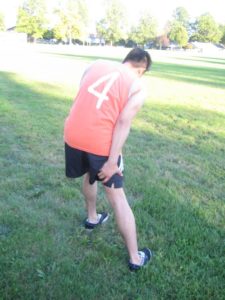Shin splints is defined as pain or discomfort in the front region of the lower legs, usually due to exercise. It is common among individuals who engage in running or other activities that place repeated strain on the legs such as basketball or tennis.
The condition is not usually serious but can prevent one from exercising or even worsen if ignored. Remember that it is not advisable to continue through the pain. Luckily, it can be managed at home and expected to settle within a few weeks.
What are the signs?
The chief sign of shin splints is pain or discomfort in the shin bones that runs down at the front region to the lower legs.
The pain or discomfort tends to:
- Start soon after starting physical activity or exercise
Shin splints is typically caused by running or activities that place repeated weight bearing on the legs. - Gradually improve while resting. Oftentimes, the discomfort might settle during activity but can become continuous and persist even while at rest.
- Dull and achy but becomes significantly severe or sharp and stop during exercise
- Affect both shins
- Involve a larger region of the shin
In some cases, there is also some swelling.
What are the causes?
Shin splints is typically caused by running or activities that place repeated weight bearing on the legs. Some of the factors that increases the possibility of developing shin splints include the following:
- Abrupt changes in the activity level such as the starting a new exercise regimen or suddenly increasing the pace or distance
- Overweight
- Running on hard to uneven surfaces
- Wearing ill-fitting or worn out footwear that do not provide adequate cushioning and support to the foot
- Having flat feet or one that overpronates
- Having weak ankles, taut calf muscles or Achilles tendon
Management of shin splints
Shin splints can be managed at home. The following measures can help lessen the pain and allow healing of the legs:
- Adequate rest – cease any activity responsible for the shin splints for at least 2-3 weeks. After this period, the individual can steadily resume his/her normal activities
- Pain medications to lessen the discomfort if needed
- Low-impact activities such as swimming, cross-training, yoga and cycling which places less strain on the shins as they heal
The individual can resume normal activities after a few weeks once the pain has settled. The activity level must be increased gradually.
More Information / Disclaimer
The information posted on this page on shin splints is for learning purposes only. Learn to recognize the signs and how it is managed by taking a standard first aid course with Toronto First Aid.

